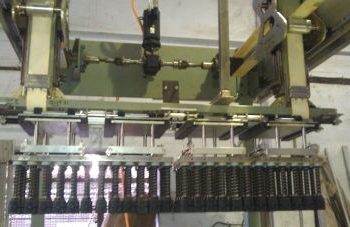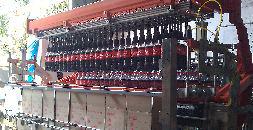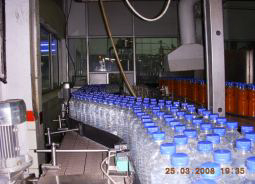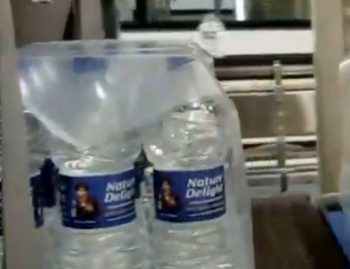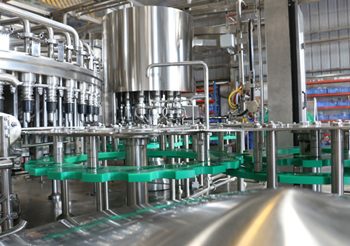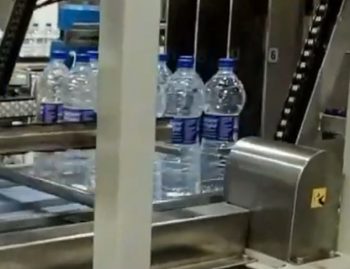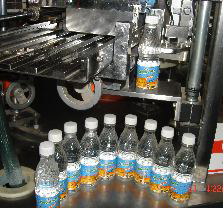
Introduction to PET Filling Machines
The global market for PET filling machines is a fascinating arena that has experienced considerable evolution in recent years. With the rise of bottled beverages, the demand for efficient and reliable filling solutions has skyrocketed. As companies strive to meet consumer expectations while maintaining sustainability, understanding this dynamic market becomes essential.
From water to soft drinks and even sauces, PET (Polyethylene Terephthalate) bottles are everywhere. They have become synonymous with convenience and quality packaging. But behind every smooth operation lies advanced machinery designed specifically for these applications.
As we dive deeper into the trends shaping this industry, opportunities waiting to be tapped will emerge clearly. Let’s explore how businesses can navigate through challenges while capitalizing on growth potential in this competitive landscape. The journey into the world of PET filling machines promises insights that could redefine strategies across various sectors!
Global Market Overview
The global market for PET filling machines is experiencing remarkable growth. With rising demand for bottled beverages and food products, manufacturers are ramping up production capabilities.
Regions like North America and Europe dominate the landscape due to established beverage industries. However, Asia-Pacific is rapidly emerging as a key player. The region benefits from urbanization and increasing disposable incomes.
Sustainability trends also drive market expansion. Consumers increasingly prefer eco-friendly packaging solutions, prompting companies to invest in advanced filling technologies that minimize waste.
Moreover, the proliferation of small-scale bottling operations contributes to diversification within the sector. This trend opens doors for innovative startups focusing on niche markets.
As competition intensifies globally, businesses are prioritizing efficiency and speed in their operations to meet consumer demands while maintaining quality standards.
Key Trends and Drivers in the Industry
The global market for PET filling machines is witnessing significant transformation driven by various factors. One major trend is the increasing demand for eco-friendly packaging. As consumers become more environmentally conscious, manufacturers are optimizing their processes to reduce waste.
Additionally, automation plays a crucial role in shaping the industry. Advanced machinery enhances production efficiency and ensures consistent quality. Companies are investing in smart technologies that allow real-time monitoring and maintenance.
Health and safety regulations also drive innovation in this sector. Stringent standards require improved hygiene measures during production, pushing manufacturers to adopt cutting-edge solutions.
Consumer preferences shift towards smaller portion sizes and ready-to-drink products. This change compels producers to adapt their filling lines swiftly, catering to evolving demands while maintaining operational agility.
Growth Opportunities in Emerging Markets
Emerging markets present a wealth of opportunities for the PET filling machine industry. Countries in Asia, Africa, and Latin America are experiencing rapid industrialization. This shift leads to increased demand for packaged beverages and consumer goods.
As urban populations grow, so does the need for efficient production systems. Manufacturers are eager to invest in advanced filling technologies that boost productivity and reduce waste.
Regulatory frameworks in these regions are evolving as well. Governments support local industries with incentives aimed at enhancing manufacturing capabilities.
Moreover, rising disposable incomes drive consumer spending on packaged products. This trend creates a fertile ground for businesses that offer innovative packaging solutions.
Sustainability is another key focus area. Companies can leverage eco-friendly practices to appeal to environmentally conscious consumers while tapping into new market segments.
Challenges and Limitations for the Market
The global market for PET filling machines faces several challenges that can impede growth. One significant hurdle is the high initial investment required for advanced machinery. Many manufacturers, particularly small and medium enterprises, struggle to justify the expenditure.
Regulatory compliance also poses a challenge. As consumer safety standards evolve, companies must continually adapt their equipment to meet new requirements. This often leads to increased costs and longer timelines for production.
Moreover, competition from alternative packaging solutions can hinder market expansion. With rising concerns about sustainability, many brands are exploring eco-friendly options that may not rely on traditional PET containers.
Supply chain disruptions have become more prevalent too. Fluctuations in raw material availability can impact production schedules and lead to higher operational costs.
These factors create a complex landscape that businesses must navigate carefully as they seek opportunities within the industry.
Technological Advancements in PET Filling Machines
Technological advancements in PET filling machines are revolutionizing the beverage industry. Innovations such as automated control systems enhance precision and efficiency during production processes.
These smart technologies reduce human error, leading to higher product quality and consistency. Moreover, integration with IoT allows for real-time monitoring of machine performance, enabling swift adjustments to minimize downtime.
Sustainability is another key focus. Modern machines now utilize energy-efficient designs that lower operational costs while reducing environmental impact. Features like quick-changeover capabilities also streamline production lines, accommodating various bottle sizes without extensive downtime.
Additionally, enhanced safety features protect operators and ensure compliance with regulatory standards. As manufacturers seek ways to optimize their operations, these technological improvements are essential for maintaining competitiveness in a rapidly evolving market landscape.
Future Outlook and Predictions for the Market
The future of the global market for PET filling machines is poised for significant evolution. With increasing demand in bottled beverages, the industry will likely see advanced automation technologies and AI integration.
Sustainability concerns are shaping market dynamics. Manufacturers are expected to innovate around eco-friendly materials and energy-efficient processes, ensuring compliance with environmental regulations.
As consumer preferences shift towards convenience, producers may focus on versatile machines that handle various bottle shapes and sizes. This adaptability could become a competitive advantage.
Additionally, emerging markets in Asia-Pacific and Latin America present exciting prospects. Investments in infrastructure and rising disposable incomes are driving growth.
Stakeholders should keep an eye on regulatory changes as governments push for greater sustainability in packaging solutions. The interplay between innovation and regulation will undoubtedly shape future trends within this vibrant sector.
Conclusion
The global market for PET filling machines is on an upward trajectory, influenced by various factors from emerging trends to technological innovations. As businesses strive for efficiency and sustainability in their operations, the adoption of advanced PET filling solutions is becoming increasingly important.
Emerging markets present a wealth of opportunities as demand grows alongside industrialization efforts. Companies that can navigate these landscapes successfully will likely see substantial returns. Yet, challenges remain. Issues such as high initial costs and regulatory compliance can impact growth potential.
Technological advancements are shaping the future of PET filling machines, driving improvements in speed, accuracy, and environmental performance. This evolution makes it essential for companies within the industry to stay ahead of the curve.
As we look toward the future, it’s clear that those who understand these dynamics—trends, growth opportunities, and challenges—will be well-positioned to thrive in this competitive landscape. The global market holds promise for innovators ready to embrace change and seize new possibilities.
